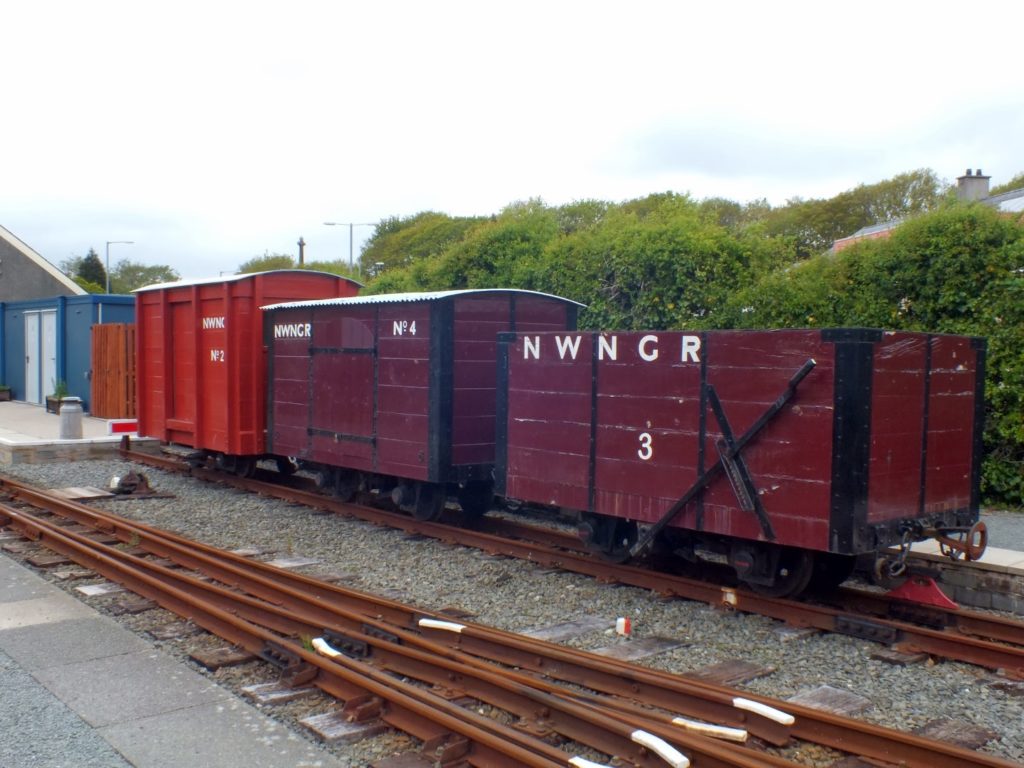On Wednesday November 9th, on a cold day with heavy rain, a surprisingly large team assembled at the Wenhaston Community café. Even more surprising was the decision of the majority to continue with landscaping and clearance on the trackbed: this group, with incredible fortitude (or maybe it should be ‘fiftytude’) drove off into the November murk – and so far, have not been seen again.
Meanwhile, the workshop team (well – really, those who didn’t want to get soaked) were sadly disappointed to find that the first job was to clear up the outside storage area, and prepare for roof extension works: this was, of course – in the rain! That done, we (and from that you can guess that the writer was in the – well – shall we agree to call it the ‘sensible team’ – perhaps not) cut up a six-metre length of heavy steel angle, which will form the main structure of the ends of Open Wagon 41.

These were then provided with a heavy chamfer (a nice feature of the original wagon), had superficial rust removed, and were primed (we took the opportunity to clean up and prime some cast brackets saved from the now-redundant 2’6” headstocks, as well). Robin is turning into a skilled man with a grinding disc – we will get him cutting as well (the hardest thing to get right, which takes a lot of practice).
The Chairman went to Peggs of Aldeburgh, our favoured contractor for metalwork, to discuss the hardware for Wagon 41: as a result, the six very heavy-duty hinges for the sides have been ordered, with beefy “tailgate” latches, to as near a pattern to the original wagons as can be managed. The wagon sides are made up of three 10’ by 8” 1½” thick planks, and will be pretty heavy, so everything needs to be robust.


With all the metalwork for Van 40’s doors now at the SOLD workshop in Lowestoft, there is no reason why both of these wagons cannot be completed in spring 2017. Thus the Heritage Train concept will, in a sense, be three-fifths complete (including the Van 13 replica body at Blyford Lane) – although saying that ignores the obvious fact that SR Brake-Composite Balcony Coach 8, and Sharp Stewart locomotive “Blyth”, will take considerably more cash and time than the wagons.
Some might ask – why bother with wagons, which will not be revenue-earning? Our response is that an authentic SR train has to be mixed (or freight only), and the railway never (as far as is known) ran a consist of passenger coaches alone – the “SR story” would not be complete without explaining the importance of the vital freight traffic. Naturally, there are other reasons as well: the Chairman funded and helped build the freight elements of the North Wales Narrow Gauge Railway mixed heritage train in Porthmadog at the Welsh Highland Railway Ltd. (which now trades as the WHHR), and wanted to do something similar for the SR. The NWNGR open, van and Guard’s van were also based on Royal Naval Armament Depot 2’6” wagons. You can see the result (with a small open and an original RNAD van – called “The Fighting Brake” – added) on youtube – use the title: Gelert Welsh Highland Railway Freight.
Chris was sanding down one of the Motor Rail bonnet sides which has suffered an adverse reaction when spray-painted: Stuart, our specialist and skilled painter, decided that there was something odd in the old paint – so that has all gone. The underlying metal is in very good condition indeed, and now has etching primer on it, ready for respray. The rest of the loco body has now been undercoated twice, ready for flatting, and the application of GER blue (to match the SR steam locos).
The AGM is on Saturday 12th – and although we are unlikely to be able to announce much, yet, on the Blyth Road Project (where complexities seem to proliferate daily), there will be an important announcement on the rolling stock front.
